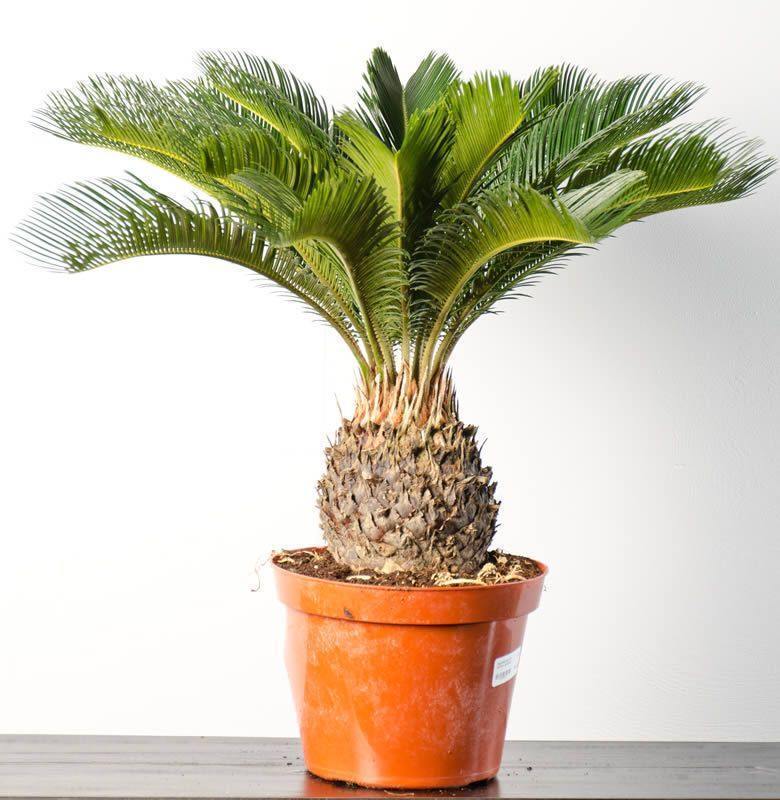Learn How to Grow Sago Palm in this article. Growing sago palm is easy, it is a beautiful ornamental plant and can become an excellent specimen in your home and garden.

This post is dedicated to cycus revoluta, which is also called as ‘sago palm’. For more information, see this article.
Common name: Sotetsu, sago palm, king sago, sago cycad, Japanese sago palm
Family: Cycadaceae
USDA Zones: 8 – 11
Propagation Method: Seeds, pups
Difficulty: Easy
Soil Type: Slightly acidic to neutral
Description
Native to Japan, cycas revoluta is not a true palm tree (Arecaceae) this slow and low growing ornamental plant is actually a cycad. It has shiny, dark green, feathery leaves which can grow upto 150 cm. (60 inch) long. Its leaves spring from a kind of short and stocky trunk, formed as scales.
The plant contains reserves of water to use during droughts. The cycads live very long life without any difficulty.
Sago palm propagation
You can propagate sago palm from seeds or from lateral shoots. In both the cases, the process is slow and germination rate is low, so it is better to buy a plant from nursery.
Requirements for growing sago palms
Sun
Sago palm can be grown in full sun but performs better in area with shade in afternoon.
Watering
When plant is actively growing water sago palm moderately. Do deep watering, moist the soil well in each watering session but let the soil to dry out between this. During the period of dormancy (when the light is low or in winter) water sparingly.
Soil
Sago palm prefers sandy, well drained neutral soil with pH level around 6 to 7. Even so, it can be grown in wide variety of soils it is best to grow it in potting mix formulated for palms.
Care
Sago palms are grown outside in subtropical and tropical climate without much care. Below USDA Zone 9, care in winter is needed. Plant can withstand 14F (-10 C), below this temperature damage occurs.
Fertilizer
Sago palm requires nitrogen rich fertilizer such as of N-P-K (18 – 6 – 8 ) with trace elements to maintain its lush green crown.
Look out for magnesium deficiency like yellowing upper leaves and frizzle top. Spray with one tablespoon epsom salt mixed in one gallon of water if necessary.
Repoting
Repot your sago palm plant when the trunk covers 2/3 surface of soil. Generally in every 2 or 3 years.
Pests, Diseases and Other problems
- Sago palm is relatively disease free plant but due to poor drainage, problems like root rot and crown rot can occur. To save the plant, ensure good drainage and treat rotted parts with fungicide.
- Young plants are more prone to pests than adults. Some common pests that attacks it are scales, mealy bugs and thrips. For a pest free sago palm, keep the plant healthy and spray with pesticides if it is infected.
- The malformed leaves are due to lack of light or excess of water. To cure this, increase interval of watering and place your plant in more sunny spot. Whereas, yellowing and drying of lower leaves is nothing but probably a natural disposal of older leaves.



Awesome! Thank you! Very helpful!! ?
great info. I found what I was looking for. thank you
what is the treatment of yellow spot, mortality of new leaves and curly leaves of sago palm . please help for this problems
Does anyone know how many fronds should grow on a sago palm at one time. I bought one from a supermarket. As you can imagine it was in terrible shape. Pot too little, missing half the dirt, etc. I repotted with regular soil , larger pot placed in a southwest window. Water the first few times sparingly…..Then watered with fish fertilizer at half strength. All of a sudden, there are five fronds coming up from the middle. Is this normal ?
Yes this is how it puts on new leaves
I recently dug up 40 sego pups ranging in size from 4 inches tall to 12 inches tall. I have read that it is difficult to grow segos when the pups are so large. Do you follow the same procedure potting large pups as small ones? Thanks for the information!
I live in Myrtle Beach,SC and did not want to cut back the Sago Palm in the winter. I purchased “the planket” frost protection blankets. I covered the plants before last nights frost. Can I leave the blanket on the plant until spring? I have been told many people cover the plants during cold weather to keep them looking good year around.